The Impact of Nonfiction Books on Young Minds
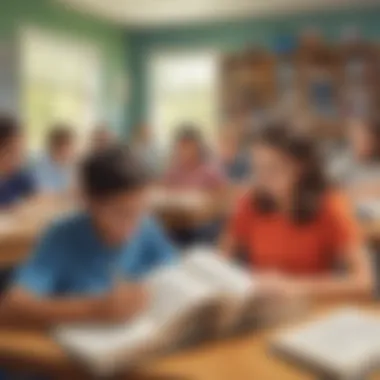
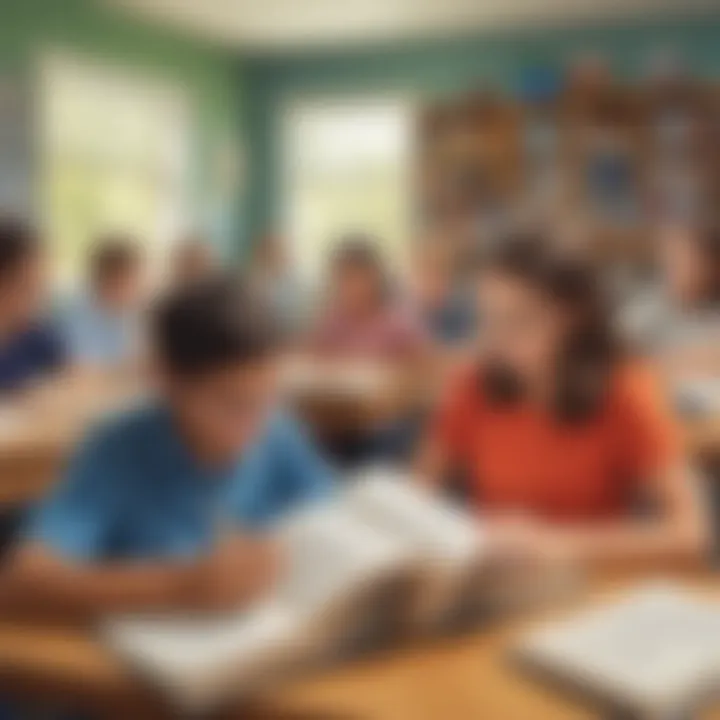
Intro
In today’s educational landscape, the value of nonfiction books for elementary students is becoming increasingly recognized. These texts unveil a world not just of facts, but of ideas and perspectives that nurture curiosity and understanding in young minds. Unlike fiction, nonfiction offers a window into reality, teaching children about the wonders of the world, from the intricacies of nature to the wonders of technology. This article will take a closer look at the essential role nonfiction plays in the education and overall development of children aged five to twelve.
Nonfiction books serve as a bridge connecting young learners to various subjects, fostering critical thinking and engagement. Whether it’s through captivating biographies that share stories of inspiring figures or informational texts that explore scientific concepts, storytelling takes on a whole new dimension in the realm of nonfiction. As we delve into various aspects of nonfiction literature—from selecting the right texts to integrating them into the curriculum—this guide aims to highlight the importance of these books and how they contribute to richer educational experiences for children.
The Role of Nonfiction in Elementary Education
Nonfiction literature plays a crucial role in shaping the educational landscape for elementary students. It offers a window into the real world, allowing young minds to grasp essential concepts, broaden their knowledge, and cultivate skills that are foundational for future learning. Nonfiction books serve not just to inform but also to inspire curiosity and foster an appreciation for learning that extends beyond the classroom walls.
One of the primary benefits of nonfiction is that it provides children with factual information about diverse subjects. This enables kids to make sense of the world and satisfies their innate curiosity. From learning about the human body to exploring the marvels of outer space, nonfiction opens up a treasure trove of knowledge that connects directly to everyday experiences. In today's environment, where misinformation can easily spread, teaching kids to distinguish between credible sources and hearsay becomes even more vital.
Defining Nonfiction Literature
Nonfiction literature is broadly defined as texts based on real events, people, and facts. Unlike fiction, which may convey imagined narratives or characters, nonfiction is rooted in reality and is often used as a tool for education and information.
Characteristics of nonfiction literature include:
- Factual content
- Clear and structured format
- Educational purpose
- Engaging illustrations or photography
In the realm of elementary education, textbooks, encyclopedias, and other educational materials fall under the category of nonfiction. However, it is not all dry and academic. Engaging nonfiction books for kids can employ humor and relatable language, making the learning process exciting and approachable.
Historical Context of Nonfiction for Kids
The use of nonfiction literature in education hasn’t always been the prevalent choice. Historically, children's literature revolved primarily around fairy tales, folklore, and stories laden with moral lessons. But as the world evolved and the emphasis on education increased, the need for factual and informative texts for children became apparent.
In the late 20th century, educational theorists began to recognize that children thrive on exploration and curiosity. Publishers responded by creating a wealth of nonfiction materials tailored specifically for younger audiences. Books like National Geographic Kids series or the Who Was? biography series have become staples in classrooms and homes alike.
Indeed, the historical context reveals a shift in overarching educational philosophies, moving from rote memorization to development of critical analysis and a love for learning. This journey continues today, and the role of nonfiction remains instrumental as we guide elementary students towards a comprehensive understanding of the world around them.
"Nonfiction serves as an essential bridge, connecting children’s natural curiosity with structured knowledge, fostering a love for exploring facts and truths."
The trend of integrating nonfiction literature within elementary education highlights the broader implications for lifelong learning, making it imperative to seek out high-quality nonfiction books that engage, inform, and inspire young readers.
Why Choose Nonfiction Books for Young Readers
Choosing nonfiction books for young readers is more than just selecting a genre; it’s about laying the groundwork for a thriving mind. Nonfiction holds a treasure trove of knowledge, presenting facts, theories, and real-world narratives that allow elementary students to connect the dots in various subjects. This section will delve into the compelling reasons to incorporate nonfiction literature into the lives of young readers, exploring how it builds knowledge, fosters critical thinking skills, and nurtures lasting learning habits.
Building Knowledge Bases
When children engage with nonfiction texts, they are not merely flipping through pages; they are constructing their own understanding of the world. Nonfiction literature serves as a powerful tool for building knowledge bases by providing factual information on diverse topics. A child who reads about the solar system in a vibrant book filled with pictures of planets is not just memorizing facts— they are nurturing curiosity about the universe, inspiring questions about space and science.
Books like "The Magic of Reality" by Richard Dawkins or "National Geographic Kids: Everything Weather" are perfect examples that combine rich visuals with well-researched content. These texts present complex subjects in an accessible manner, allowing children to grasp foundational concepts. The exposure to various fields stimulates their interest and helps develop a robust internal catalog of knowledge to draw from as they navigate their education.
Fostering Critical Thinking Skills
Nonfiction books challenge young readers to discern fact from fiction, an essential skill in today's information-rich environment. As they engage with nonfiction narratives, children learn to analyze information, question sources, and develop opinions anchored in evidence. When kids read about historical events or scientific discoveries, they encounter differing perspectives and conflicting views, prompting them to think critically about the nature of truth.
For instance, while reading a biography of a famous inventor, children might consider what factors contributed to that person’s success or failure. They learn to evaluate how contexts shape outcomes, engaging actively in the learning process. This skill, cultivated in the realm of nonfiction, spills over into their everyday lives, making them astute observers capable of thoughtful insights.
Encouraging Lifelong Learning Habits
Introducing nonfiction to young readers nurtures a love for learning that stretches well beyond the pages of a book. By exposing children to real-life stories, scientific marvels, or cultural traditions, nonfiction books spark an ongoing curiosity that encourages exploration and inquiry. Kids develop habits of seeking knowledge out of sheer interest rather than obligation. As they journey through the wonders of nonfiction, they become lifelong learners.
Supplementing classroom learning with nonfiction books, such as "What If You Could Sniff Like a Shark?" by Melissa Stewart or guides about native wildlife or art techniques, can be incredibly enriching. These resources encourage children to delve deeper into topics as they gain independent learning skills—skills that will serve them well into adulthood.
In summary, the advantages of incorporating nonfiction books into the reading repertoire of elementary students cannot be overstated. From building a solid knowledge base, fostering critical thinking, to encouraging a love for ongoing learning, nonfiction presents countless opportunities for young minds to thrive. Nonfiction is not just a genre; it’s a lens through which the world is explored and understood.
"Nonfiction is an invitation to discover the world in all its complexity and beauty." - Unknown
The journey into nonfiction literature can transform young readers into informed, thoughtful, and curious individuals, setting them up for a successful future.
Categories of Nonfiction Books for Elementary Students
When it comes to selecting nonfiction literature for elementary students, understanding the various categories available is crucial. Each category provides unique content that caters to different interests and educational requirements, fostering a deeper understanding of the world. By exploring categories like Science and Nature, History and Culture, Biographies and Autobiographies, and How-To Guides, educators and parents can better tailor reading materials to inspire curiosity, critical thought, and engagement. Choosing the right category can make all the difference in whether a young reader connects with the material, fostering a love for learning.
Science and Nature
Entering the realm of Science and Nature in nonfiction opens up a treasure trove of information. Kids can learn about the mysteries of the universe, the inner workings of the natural world, and the innovative ideas that shape our lives.
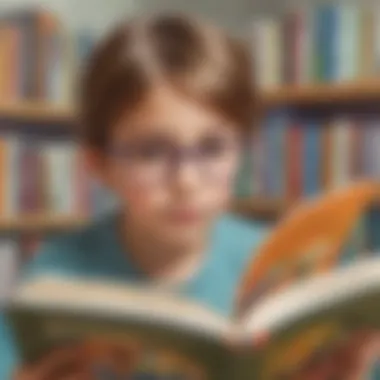

Popular Science Texts
Popular Science Texts light the way for young minds, simplifying complex concepts into digestible bits that can be easily understood. These books often come with vivid illustrations, making them appealing and inviting to read. A key characteristic of this type is its ability to ignite interest in scientific ideas, like physics or biology, through relatable examples and engaging narratives. This creates an attractive option for readers who might not initially see science as relevant to their lives.
A unique feature of these texts is their careful balance between education and entertainment. This can lead to an increased appreciation for science, enhancing the overall learning experience as children delve into topics they might not have otherwise explored. However, some may argue that the oversimplification of complex ideas can sometimes lead to misunderstandings about scientific principles.
Biodiversity and Ecosystems
Understanding Biodiversity and Ecosystems allows students to grasp the importance of our environment and the delicate balance that sustains life on Earth. Books in this category often highlight specific habitats, species, and the interconnectedness between organisms.
One of the primary appeals of this category is its emphasis on conservation and respect for nature, aligning with key educational goals. By learning about various ecosystems, children may develop a deeper empathy towards the natural world. The challenge, however, lies in selecting books that present accurate and up-to-date information, as reused old texts can sometimes misinform readers.
Inventions and Innovations
Nonfiction about Inventions and Innovations invites students on a journey through history, showcasing the creative minds that have shaped our culture. This genre often features timelines and vivid stories behind various inventions, making it a popular choice for curious young readers.
The key characteristic here is its focus on problem-solving and creativity, encouraging children to think outside the box. This aspect makes these books particularly beneficial, as they not only educate but also inspire innovation. However, while many of these books provide exciting narratives about inventions, some may neglect to discuss the implications or challenges associated with these innovations.
History and Culture
Diving into History and Culture allows children to connect with past generations. These books show kids who they are, where they came from, and how diverse experiences shape the world.
Cultural Narratives
Cultural Narratives provide insight into various communities and traditions, offering a window into the lives of others. They often include stories that resonate with personal experiences, which makes them relatable for young readers.
The unique feature of cultural narratives is their potential to foster understanding and acceptance. By reading about diverse cultures, children learn the value of tolerance, which is increasingly crucial in our global society. Nevertheless, it’s important to select narratives that accurately portray cultures and avoid stereotypes.
Historical Figures
The stories of Historical Figures can excite and inspire young readers as they learn about great leaders and visionaries who shaped the world. These texts often include lessons and anecdotes that emphasize perseverance and integrity.
Their key characteristic is their ability to present role models in an engaging manner; this can significantly benefit students, giving them figures to emulate. However, the challenge lies in presenting these figures in a balanced light. Some narratives risk oversimplifying complex histories or glossing over controversy surrounding certain figures.
Significant Events
Significant Events texts provide a chronological narrative of pivotal moments in history that shaped societies. From wars to revolutions, these books help students grasp the cause-and-effect relationships in history.
Highlighting their key characteristic, these texts often weave engaging storytelling with factual recounting. This approach helps students comprehend large-scale events in a relatable way. The downside, however, may come from the fact that not every significant event can be detailed, potentially leaving gaps in a student's understanding of history.
Biographies and Autobiographies
Biographies and Autobiographies represent profound ways for students to learn through the lives of individuals, showcasing experiences that often resonate with their own dreams and aspirations.
Inspiring Leaders
Inspiring Leaders not only tell the stories of remarkable individuals but also provide lessons about resilience, creativity, and leadership. As children read about these figures, they can see how ordinary people can achieve extraordinary things.
This category’s unique advantage lies in its ability to motivate young readers by offering relatable triumphs. Yet, a careful selection of books is crucial. Some narratives can overly dramatize struggles or successes, which may give an unrealistic portrayal.
Transformative Thinkers
Books about Transformative Thinkers show how ideas can evolve and shape societies. These figures challenge norms and encourage kids to think critically.
The key characteristic here is the focus on innovation and cognitive leaps, which can inspire young minds to think outside traditional frameworks. However, it’s essential to recognize that some transformative thinkers’ ideas might be complex and can require supplementary discussions for better understanding.
Everyday Heroes
Everyday Heroes highlight regular individuals’ contributions to society, allowing children to connect with relatable stories. By emphasizing the actions of those who aren’t traditionally recognized, these texts help students see that they, too, can make a difference.
The key feature here is the accessibility of these accounts, which can encourage empathy and active participation in community life. On the flip side, though, is the risk that stories might feel less extraordinary compared to those of more celebrated figures, potentially undermining their impact.
How-To Guides and Practical Knowledge
How-To Guides and Practical Knowledge books are invaluable tools for skill development, allowing children to harness their hands-on abilities while learning new skills.
Arts and Crafts Guides
Arts and Crafts Guides encourage creativity and self-expression, essential for fostering imagination within children. Featuring step-by-step instructions and vibrant illustrations, these guides make art approachable.


Their unique characteristic lies in promoting fine motor skills and artistic expression while providing hours of engaging activity. However, they sometimes require materials that might not be readily available, which could be a drawback for some readers.
Cooking and Nutrition
Cooking and Nutrition books are great for teaching children about healthy eating habits. These texts often intermingle practical recipes with nutrition education, making them an engaging choice.
Their key characteristic is their hands-on approach that engages young readers, helping them make better food choices. A potential disadvantage here could be that not all recipes are age-appropriate, which can lead to frustration if adult supervision isn’t available.
Basic Life Skills
Basic Life Skills books prepare children for independence in an engaging way. Covering topics from personal organization to basic hygiene, these texts serve as foundational resources for growing individuals.
The uniqueness lies in equipping kids with essential life skills, fostering confidence and self-sufficiency. However, one limitation could be the broad scope, which might not allow for in-depth exploration of specific skills.
In summary, navigating the various categories of nonfiction books allows parents and educators to select texts that suit children's unique interests and developmental stages, ultimately expanding their understanding of diverse topics and the world around them.
Selecting Appropriate Nonfiction Literature
Choosing the right nonfiction literature for elementary students is crucial, not just for developing their academic skills, but also for enhancing their personal growth. The array of topics available can either light a spark of curiosity or leave a child feeling overwhelmed and disinterested. Therefore, understanding how to select books that align with children's reading abilities and interests is key to fostering a love for reading. This section will explore various elements vital in this selection process: understanding reading levels, assessing a child’s interest and engagement, and evaluating the depth and complexity of the content.
Understanding Reading Levels
Navigating the world of reading levels can seem like traversing a complex maze, but it doesn't have to be daunting. Each child progresses at their own pace, and comprehension varies broadly among young readers. Books come in various reading levels, often categorized as easy, intermediate, and advanced. Knowing where a child fits into this spectrum helps ensure that the texts they encounter are neither too easy nor too challenging, as both extremes can lead to disengagement.
When selecting nonfiction books, parents and educators should keep a few considerations in mind:
- Grade-Appropriate Texts: Look for books that are labeled with their intended grade levels. Publishers often indicate reading levels based on factors like vocabulary, sentence structure, and thematic complexity.
- Lexile Measures: Some resources provide Lexile scores, assessing text complexity based on the learner’s age and comprehension capabilities. These tools can guide selections effectively.
Being mindful of these evaluations can help children feel successful and encourage them to tackle more challenging materials when they are ready.
Assessing Interest and Engagement
Engaging children with nonfiction texts hinges significantly on their personal interests. If a child finds the subject matter captivating, they’ll likely be more inclined to dive into the material and broaden their understanding. It's essential to engage in conversations about what topics spark their curiosity. For example:
- If a child enjoys animals, selecting books focusing on endangered species or habitats can hook their interest.
- Young inventors may gravitate towards books about famous inventors or groundbreaking innovations.
By allowing children to express their interests, parents and educators can curate a collection that resonates with them. This approach fosters motivation, making reading feel enjoyable rather than a chore.
Evaluating Depth and Complexity
Not all nonfiction is created equal. The depth and complexity of a book should align with the developmental stage of the child. It’s about balancing information density and accessibility. A good nonfiction book should challenge a reader without overwhelming them. Here’s how to gauge the right fit:
- Content Relevance: Determine if the content is age-appropriate. Young children might require straightforward explanations, while older elementary students may benefit from more nuanced discussions of a topic.
- Visual Aids: Nonfiction is often enriched with illustrations, diagrams, or photographs. Books employing these elements effectively cater to visual learners and help explain complex concepts easily.
- Question Prompts: Look for books that include thought-provoking questions or activities. This encourages deeper engagement and stimulates critical thinking about the material.
Selecting appropriate nonfiction literature for elementary students is not merely about choosing books; it's about nurturing a nourishing reading environment that aligns with their developmental needs and interests. By understanding reading levels, assessing engagement, and evaluating depth, parents and educators can create a robust reading culture that not only supports literacy but also cultivates an understanding of the world.
Integrating Nonfiction into Educational Settings
Integrating nonfiction into educational settings is more than just adding a few books to a shelf; it transforms the learning experience for students, making it richer and more engaging. This practice encourages students to explore, ask questions, and seek answers outside of traditional narratives. By weaving nonfiction literature into lessons, educators can stimulate curiosity and provide context for real-world issues, aligning classroom discussions with students’ experiences and interests.
Curriculum Development
When crafting a curriculum, incorporating nonfiction literature is essential as it connects academic content to the real world. Nonfiction books offer a wealth of knowledge on various subjects, from science to history, that can enhance the curriculum in a meaningful way.
Consider structuring the curriculum around thematic units that revolve around nonfiction. For instance, if the focus is on ecosystems, students could read about local wildlife, environmental challenges, and conservation efforts through different nonfiction resources. This multi-dimensional approach not only helps students grasp complex concepts but also applies their learning to real-life scenarios, building a more profound understanding of their environment.
Educators should also evaluate the mix of nonfiction texts with fiction to provide a balanced view. By integrating both types of literature, they cater to diverse learning styles and preferences, ensuring that every student finds materials that resonate with them. Using resources that are age-appropriate and relevant to students fosters an inviting learning atmosphere.
Collaborative Learning Activities
Collaborative learning activities that incorporate nonfiction allow students to work together and learn from one another. Group projects, discussions, and presentations centered around nonfiction texts stimulate dialogue and critical thinking. For instance, students could be divided into small groups to research a particular historical event or scientific principle using nonfiction resources. By discussing their findings and creating presentations, they not only engage deeply with the material but also develop communication and teamwork skills.
Furthermore, think about implementing book clubs or reading circles that focus on nonfiction titles. These settings provide students with the chance to voice their opinions, raise questions, and engage critically with the texts. An encouraging environment can lead to unexpected insights and a greater appreciation for the material. Educators can guide these discussions to ensure that students are analyzing the content instead of merely summarizing it, promoting a culture of inquiry and exploration.
Using Multimedia Resources
In today’s digital age, blending nonfiction books with multimedia resources can significantly enrich the educational experience. Using videos, podcasts, and interactive websites alongside traditional texts can help diverse learners absorb information in various formats. For instance, when studying a topic like space exploration, students could read a nonfiction book about the planets, watch documentaries, and participate in virtual field trips to NASA. This varied approach caters to various learning preferences, making nonfiction engaging and accessible.
Additionally, educators can utilize online platforms and databases that offer a wealth of nonfiction material. Websites like Britannica or educational YouTube channels can serve as excellent supplements, providing visuals that enhance comprehension and retention. By blending these resources into lessons, teachers provide students with a comprehensive learning experience that transcends the confines of textbooks.
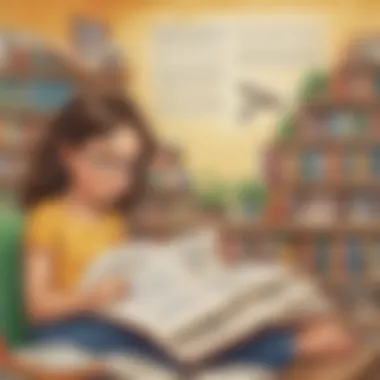
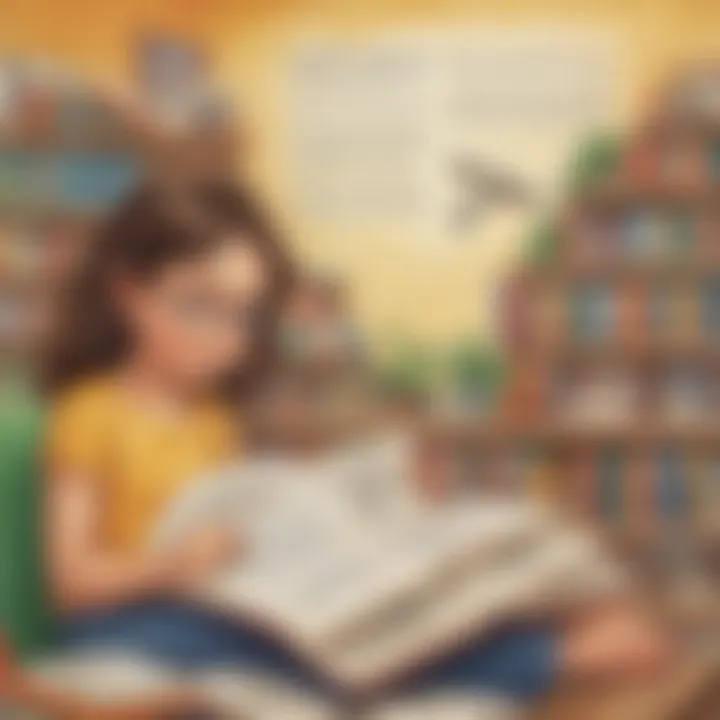
"Incorporating multimodal resources into education offers students diverse ways to connect with content, making the learning experience dynamic and accessible."
In summary, integrating nonfiction into educational settings not only enriches the curriculum but also empowers students to engage with real-world issues. Through collaborative activities and multimedia resources, teachers can create a vibrant learning environment that encourages curiosity and fosters critical thinking.
The Impact of Nonfiction on Young Minds
Nonfiction books play a crucial role in shaping the development of elementary students. These texts not only provide factual information but also serve as a foundation for critical skills that support lifelong learning. When children engage with nonfiction, they don't just absorb facts; they cultivate abilities that resonate throughout their educational journey and beyond. In this section, we will delve into specific elements that underline the impact of nonfiction on young readers.
Enhancing Comprehension and Connections
Understanding complex concepts is essential for young learners, and nonfiction books act as a bridge. When children read factual accounts on a subject, they're not only gathering knowledge; they're also creating connections. For instance, a book about the solar system can lead students to discuss various planets and relate them to their own environment on Earth. This interconnectedness enhances comprehension by providing context and promoting richer discussions among peers.
"Reading nonfiction helps young minds to see the bigger picture and understand how everything is interwoven."
Comprehension extends beyond recognizing facts. It involves processing information and relating it to existing knowledge. By experiencing real stories—from the lives of scientists to the depth of ocean life—students develop a more nuanced understanding of the world. Most of all, nonfiction instills a sense of curiosity, pushing them to ask questions like
- Why does the Earth have seasons?
- What makes a plant grow?
- Who discovered electricity?
These inquiries fuel a student's drive to seek answers, creating a culture of understanding that goes well beyond the written page.
Stimulating Inquiry and Curiosity
The spark of inquiry is vital to learning. Nonfiction texts encourage students to ask "why" and "how"—questions essential in a child's education. This exploration not only cultivates curiosity but is often linked with scientific inquiry processes. For example, reading about marine biology might prompt students to want to explore tidal pools or local aquatic environments. They can observe firsthand how ecosystems work and relate their newfound knowledge to what they've read.
This kind of engagement turns reading into an active pursuit rather than a passive one. Children become little researchers, eager to uncover facts, experiment, and validate what they learn. Parents can also foster this sense of wonder. They could take children to museums or nature centers and relate their experiences back to the nonfiction texts they read. Curiosity thrives in environments that allow exploration and questioning, bridging the gap between reading and real-world experience.
Promoting Empathy through Understanding
Nonfiction literature does more than just inform; it cultivates empathy. When children read about different cultures, historical events or personal narratives, they begin to understand the diverse fabric of society. Texts that highlight the struggles and triumphs of real people—such as autobiographies or stories of significant movements—invite students to form emotional connections with their subjects.
For instance, a biography about a figure like Malala Yousafzai opens the door for students to understand the challenges faced by individuals fighting for education in restrictive environments. It allows children to appreciate differences and develop a sense of compassion for others’ plights, regardless of their backgrounds.
By fostering empathy, nonfiction books enable students to see the world from multiple perspectives. This skill is not only crucial in school settings but also essential in their interactions with friends and family. Understanding and compassion become intrinsic values as they engage with diverse narratives, shaping them into empathetic individuals who apply these lessons throughout their lives.
Resources for Finding Nonfiction Books
Finding the right nonfiction books for elementary students is crucial. The right resources can lead to a treasure trove of knowledge and make learning a delight rather than a chore. In this section, we’ll explore various avenues where educators, parents, and caregivers can uncover these gems. Several kinds of resources can help in this search, each with its unique advantages and considerations.
Libraries and Bookstores
Libraries and bookstores are often the first stops when searching for nonfiction books. Libraries offer a vast array of titles, many of which can be borrowed for free. Public libraries often have dedicated sections for children that showcase nonfiction materials, which can be a gold mine for inquisitive young minds. When in a library, parents can also engage their children in discussions about the topics they find interesting, promoting an interactive reading experience.
On the other hand, local bookstores present the opportunity to purchase books. This can be especially appealing if you wish to build a personal library. Bookstores often feature staff recommendations, which can guide you toward popular nonfiction titles for children. Many bookstores even host events and readings, allowing kids to interact with authors and engage with topics in a lively way.
Online Platforms and Databases
In today’s digital world, online platforms serve as a vital resource for finding nonfiction books. Websites like Goodreads or LibraryThing allow users to browse through countless book reviews and ratings. They can help narrow down choices based on specific interests or reading levels.
Additionally, digital libraries such as OverDrive provide access to an extensive collection of ebooks and audiobooks. This is particularly useful for reluctant readers who might gravitate more toward audio formats. Accessing nonfiction materials in various formats caters to different learning styles and needs.
Some databases specifically targeted at schools and educators, such as TeachingBooks.net, provide insights on teaching resources related to specific titles, which can be extremely beneficial for classroom settings.
Educational Websites and Blogs
There are many educational websites and blogs dedicated to reviewing and promoting nonfiction books for children. Blogs run by educators or parents can offer reviews, reading lists, and practical recommendations based on real-life experiences. Websites like Common Sense Media help gauge the appropriateness of books regarding age and theme.
Also, platforms like Scholastic provide curated lists of nonfiction books suitable for elementary students. They even include lesson plans and activities based on selected titles, enhancing the learning experience beyond reading.
"Finding the right book is like shining a light in a dark room; it opens up whole new worlds for young readers."
The End
As we reach the end of our exploration into nonfiction books for elementary students, it is paramount to underscore the significance these texts hold within the realm of children's literature. Nonfiction has a unique ability not just to inform but to ignite curiosity, foster critical thinking, and promote emotional intelligence in young readers.
Summarizing the Importance of Nonfiction
Nonfiction literature serves a dual purpose. Firstly, it broadens the horizons of young minds by providing factual information and real-world context. For instance, a book about the solar system can spark an interest in astronomy. Secondly, it connects learning to life skills—like understanding health and nutrition through engaging texts. These books create a link between theory and practice, transforming mere facts into relatable experiences.
Just like gardening, where seeds are planted in hope of future growth, nonfiction books plant the seeds of knowledge and understanding in children. This helps them not only in their academic journey but also in their everyday decisions and interactions.
Future Trends in Nonfiction Publishing for Children
Looking forward, several trends are shaping the landscape of nonfiction publishing aimed at children. There’s a noticeable shift towards interactive books. These often combine text with elements that allow readers to explore subjects more deeply, such as QR codes linking to videos or augmented reality features that bring topics to life. Moreover, publishers are increasingly focusing on diverse perspectives, depicting histories and narratives from a multitude of cultures. The aim is to present a balanced view of the world, which is crucial in the multicultural societies our children navigate today.
The integration of technology and educational psychology is also apparent in new formats. Shorter, more engaging pieces of nonfiction can easily captivate attention, converting complex ideas into digestible snippets.
In summary, as we navigate through these changes, it’s vital to embrace the evolving nature of nonfiction literature. Encouraging children to engage with these texts lays a foundation for lifelong learning and personal growth, ultimately enriching their understanding of themselves and the world around them.







